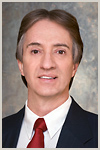© 2014 Richard Wall, All Rights Reserved.
The original caption still works!
The Central Moravian Church in Bethlehem, Pennsylvania was founded by a group of Moravians, members of a church that traces its heritage to pre-Reformation fifteenth-century central Europe.
On April 2, 1741, William Allen deeded 500 acres at the junction of the Monocacy Creek and Lehigh River to the Moravian Church, which became the base location for all Moravian missionary activity in North America.
The design for Bethlehem reflected Moravian religious beliefs. Streets, residences, community buildings, and industrial sites were carefully located according to their function. Allowances were made for growth as well as accommodations for the traveling missionaries and visitors. Bethlehem was organized around a central square, which was intended to remain as open space.
The 1741 Gemeinhaus (National Historic Landmark) was one of the largest log structures ever built in this country. The completed building measured 94' X 32' and contained a chapel, several rooms, and two dormitories. This building has been used continuously since construction began in 1741, but the exterior has been covered with clapboard siding since the mid-19th century.
After 1743, 90 percent of all buildings were constructed of stone removed from a local quarry on the south side of the Lehigh River. The Moravian Chapel (know called "Old Chapel") building was constructed in 1751 and attached to the Gemeinhaus. The Old Chapel became the new place of worship and served the congregation for the next fifty-five years. Many noted patriots worshipped here, including Martha and George Washington, John Adams, Samuel Adams, Benjamin Franklin and John Hancock. Just after the Old Chapel was completed, the Moravians made plans for Central Moravian Church.
Building a New Sanctuary: 1803 - 1806 In March 1803, excavations began for the new Central Moravian Church. Less than one month later, the massive, six-feet thick foundation walls were in place. The Federal-style church was impressively large, and was the largest church building in Pennsylvania at that time. It has been in continuous use ever since.
Lat: 40° 37' 11.28" N
Long: 76° 23' 48.36" W
Precision is: Medium. Nearby, but not to the last decimal.
Equipment used: Nikon D5100, Nikkor 10.5mm Nikon lens attached to a Nodal Ninja 3 pano head.



 Tap or click the zoom icon in the bottom right corner of the picture to switch between in-page and fullscreen view
Tap or click the zoom icon in the bottom right corner of the picture to switch between in-page and fullscreen view